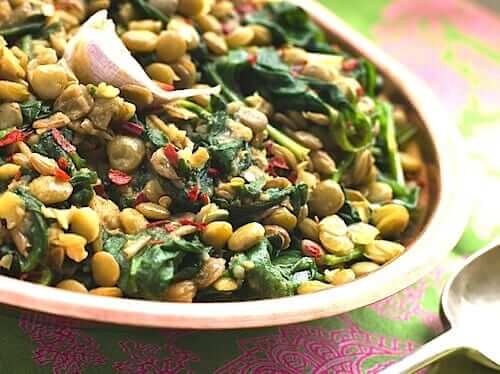Magnesium rich foods
Billions are spent every year on multivitamin supplements and one of the bestsellers is magnesium. This mineral has record-breaking health benefits and is one of the most frequently prescribed by doctors. Most people believe that taking supplements is the only way to get the amount of magnesium they really need. The truth however is that…
This post may contain affiliate links. Please read our disclosure policy.
Billions are spent every year on multivitamin supplements and one of the bestsellers is magnesium. This mineral has record-breaking health benefits and is one of the most frequently prescribed by doctors. Most people believe that taking supplements is the only way to get the amount of magnesium they really need. The truth however is that it is possible to receive an adequate intake by simply eating more of magnesium rich foods. If you are already on a healthy meal plan, you won’t find including these foods in your diet a stretch. If you’re not, adding magnesium rich foods to your menu is the best way to start turning your health around.
What are the benefits of magnesium?
Magnesium is usually sought by patients with muscular problems. This is because the mineral helps the body to process calcium, which is required for healthy bones, joints and muscles. It boosts nerve to muscle communication to support normal movement and muscular health. Increasing your magnesium intake can also prevent many diseases. You can avoid or treat conditions like high blood pressure, diabetes, heart disease, osteoporosis, kidney disease and thyroid-related symptoms by eating magnesium rich foods and supplements. Other illnesses it can affect positively are insomnia, digestive problems, depression and chronic headaches.
On top of all the above-mentioned benefits, magnesium also plays a vital role in 300 chemical processes in the body, which makes it absolutely essential to your health. In other words, you just cannot afford to live without it.
What foods are rich in magnesium?
You can start by choosing your carbohydrates carefully. Instead of processed staple foods, opt for whole grains instead. Brown rice, whole wheat pasta, buckwheat and oats are all rich in magnesium. Top choice vegetables are most green leafy ones, particularly kale, spinach, okra and chard. Bananas, grapefruit, blackberries and avocados also contain lots of magnesium. Dried fruit is also recommended, provided you eat prunes, apricots and dates.
When it comes to dairy, make sure your cheeses and yoghurt are either low fat or fat free. Other magnesium rich foods include chickpeas, white beans, kidney beans, lentils, mixed nuts and sesame seeds.
The best types of fish you can eat to increase your intake are tuna, mackerel and Pollock. For dessert or as a snack, go for dark chocolate that contains high content of magnesium-loaded cocoa powder.
What are the symptoms of magnesium deficiency?
You should look into eating more magnesium rich foods if you regularly experience fatigue, headaches, nausea, vomiting, muscle cramps, low appetite, difficulty sleeping, numbness, tingling and abnormal heart rate. Women with premenstrual syndrome can also benefit from magnesium if they gain weight, feel bloated and breasts feel tender. You should of course consult your doctor to ensure that these symptoms are caused by magnesium deficiency and not something else.
How much magnesium do you need?
The requirements will vary from mild cases to chronically ill patients. If you have a severe magnesium deficiency, you might need to complement magnesium rich foods with prescribed supplements.



Leave a Comment